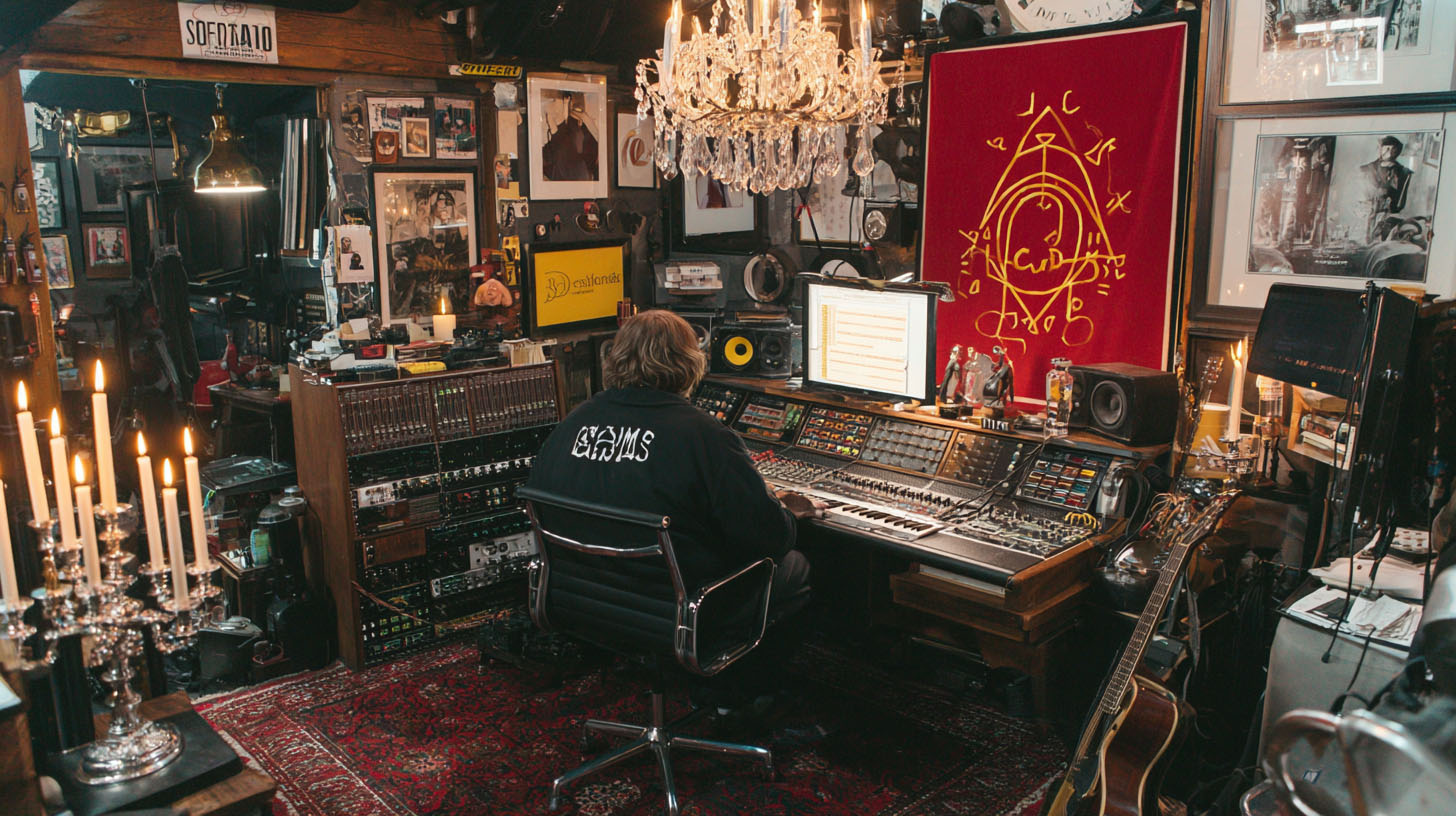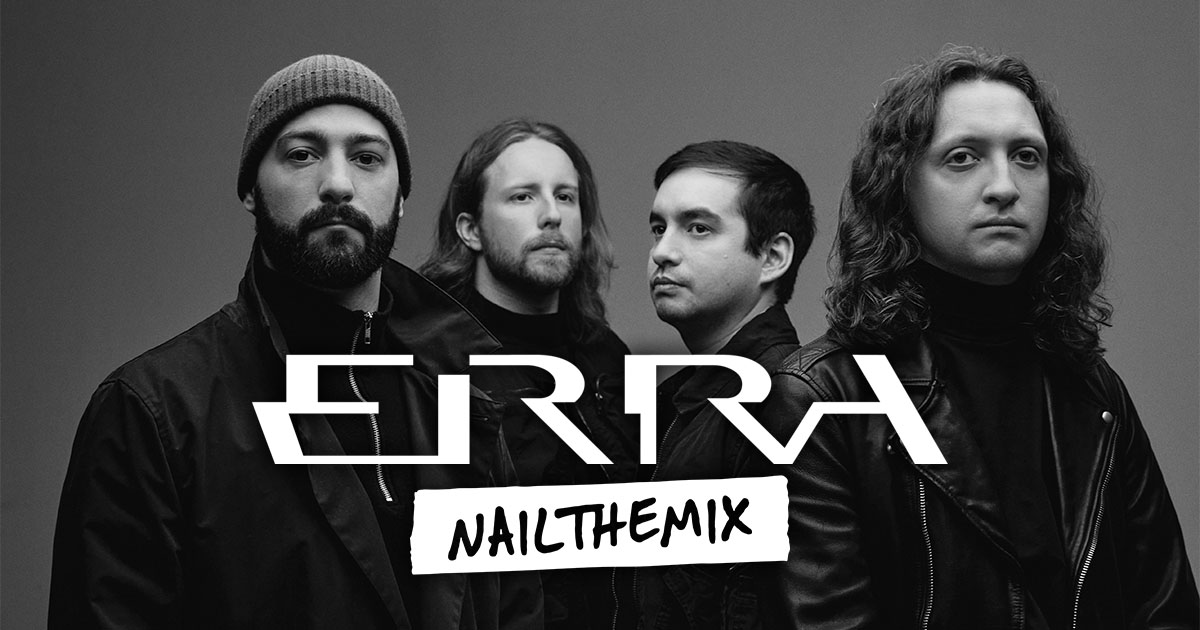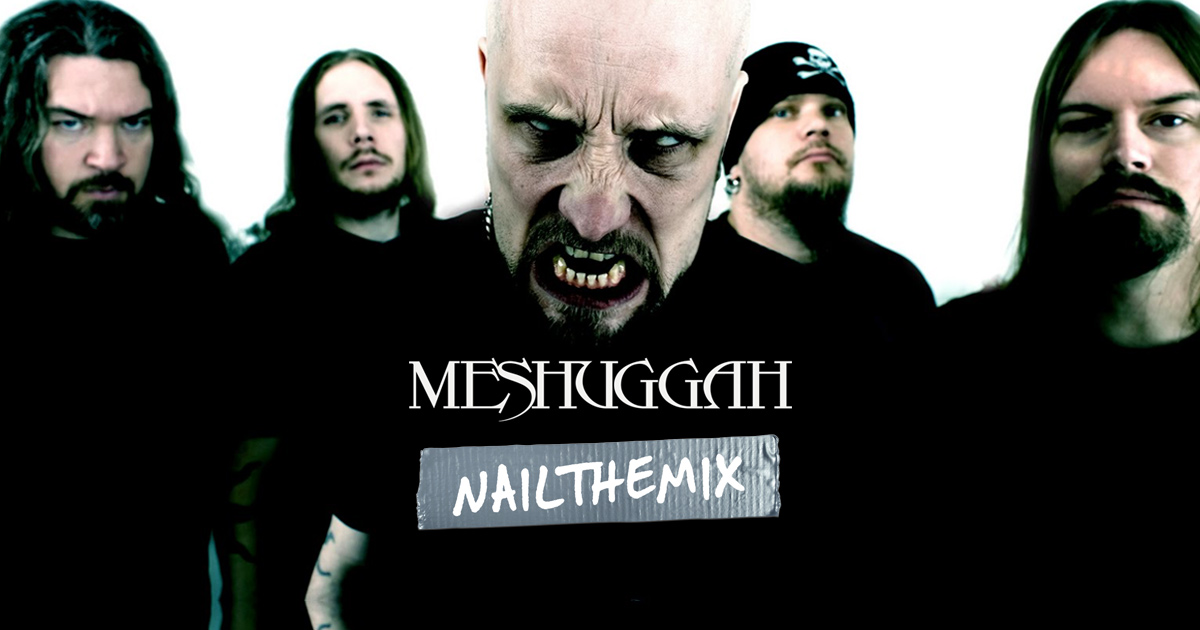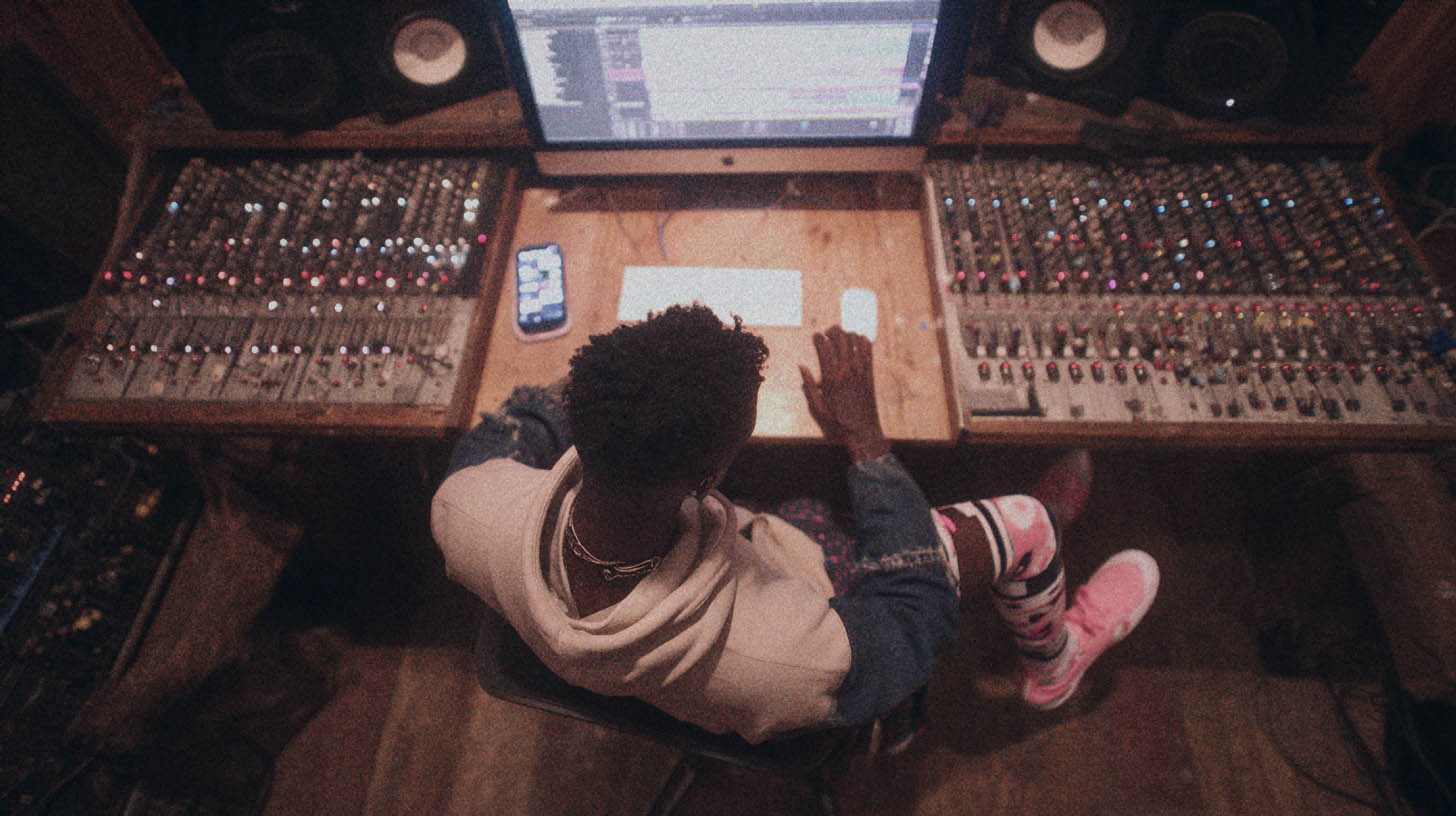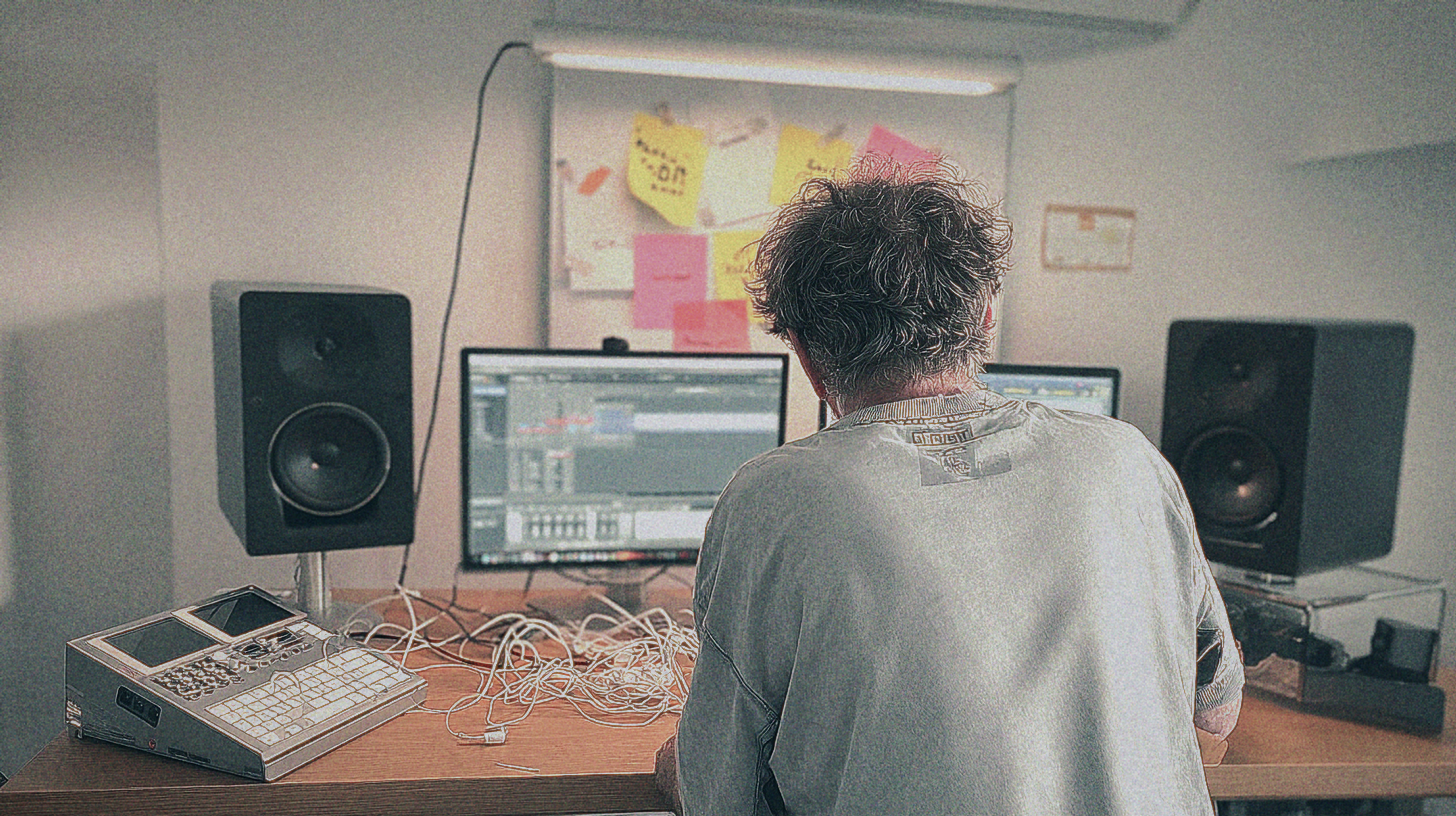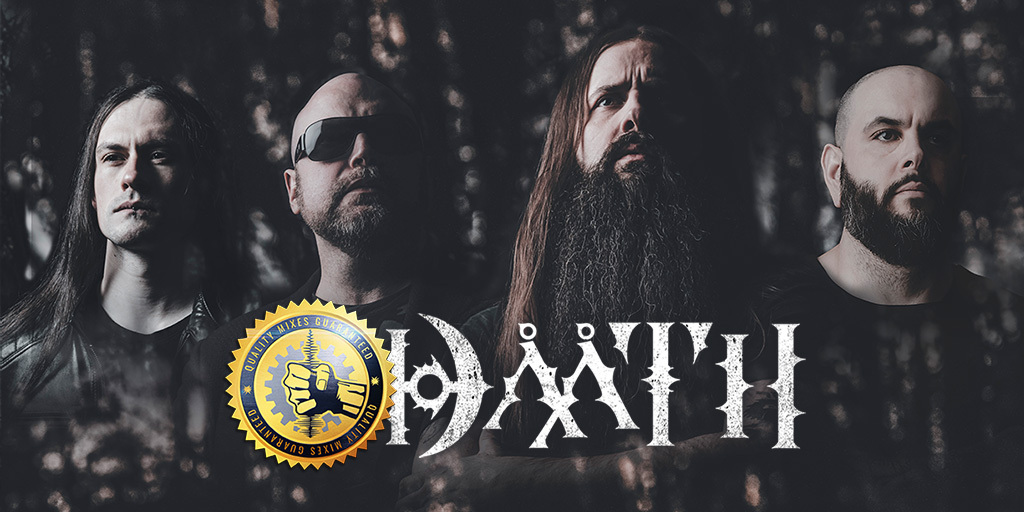
Get Daath’s Disgusting Slime Growls with Dave Otero
Nail The Mix Staff
The new Daath track is an absolute monster, and one of its most defining features is that insane, warbly, underwater vocal effect. It’s a sound that’s both a nod to the band's history and a totally modern take on vocal production. When mixer and producer Dave Otero (Flatline Audio, Cattle Decapitation, Archspire) got his hands on the session, he knew he had to pay homage to that original vibe while pushing it somewhere new.
The result is a disgusting, slimy, growling texture that sounds incredibly complex. But the good news is, it’s built from a series of simple, creative steps you can apply in your own mixes. Let's break down how Dave Otero built this signature vocal effect from the ground up.
The Foundation: A Clean Palette for Effects
Before you can drench a vocal in sauce, you need a solid performance and a good base tone. Dave’s core philosophy for creating a standout effect like this isn’t to just pile plugins onto the main vocal track. That can get messy and limit your flexibility. Instead, he creates a clean palette.
Isolate and Bounce
Here’s the workflow:
- Dial in a base vocal sound. Get your main vocal track sounding great on its own with your go-to processing. This means getting your levels right and applying solid metal compression to tame the dynamics and bring out the aggression.
- Isolate the section. Find the specific vocal phrases you want to affect, like the verses in this Daath track.
- Render to a new track. Bounce or render that audio section to a brand-new, dedicated audio track. Crucially, Dave mutes his standard reverb and delay sends before bouncing. This way, the new track is just the dry, processed vocal, giving him a perfect starting point to build his custom effects chain.
This approach keeps your mix organized and allows you to go completely wild with processing on one section without it bleeding into the rest of the song. You can see Dave do exactly this when you watch him mix the full song on Nail The Mix.
Building the "Underwater" Verse Vocal Chain
With the bounced verse vocals on a new track (which Dave conveniently named “underwater versus”), it’s time to start stacking effects. This isn’t about one magic plugin; it’s about how multiple processors interact to create a unique sound.
Step 1: Add Grit with Saturation
First up, Dave reaches for some distortion to give the vocals grit and a "broken speaker" vibe. He uses FabFilter Saturn, but any multiband saturator will do the trick. The key here is focusing the distortion. He splits the frequency bands and applies the saturation mostly to the frequencies above 500 Hz. This adds that crunchy texture up top without turning the low-mids into a pile of mud.
Step 2: Widen and Warble with Chorus
Next, to start building the watery modulation, he adds a chorus. A plugin like Soundtoys MicroShift is perfect for this. It instantly adds stereo width and a subtle warble that begins to create that off-kilter, slimy feel.
Step 3: The Secret Weapon: Rotary Speaker Emulation
This is the heavy lifter of the effect. To get that signature churning, warbling motion, Dave pulls up a rotary speaker emulation plugin—the kind you’d typically use on a Hammond organ or a vintage guitar track.
He admits he just pulled one up, wasn’t sure what half the knobs did, and started twisting them until it sounded right. That's a pro-tip in itself: don't be afraid to experiment. The whirring, spinning sound of the rotary effect is what gives the vocal its core sense of movement. He also uses the plugin's built-in drive to add more character, then blends it to taste with the mix knob.
Step 4: Sculpting with EQ
All that saturation and drive can introduce some harshness. To clean it up, Dave follows the effects chain with some surgical EQ. He noted that the rotary plugin added some annoying upper-mid frequencies, so he uses a precise EQ band to notch them out. At this stage, it’s not about textbook EQ moves; it’s about reacting to what you’re hearing and carving out the nasty stuff to let the cool stuff shine. The goal is crafting the vibe, not passing a technical exam.
Step 5: Bringing Back Time-Based Effects
Finally, after the entire "underwater" sound is crafted, Dave adds reverb and delay directly onto this effects track. Remember how he muted the sends before bouncing? This is why. By adding them at the end of this new chain, the reverb and delay tails are applied to the final effected sound, rather than being fed into the distortion and rotary plugins, which would create a chaotic mess.
Creating a Call-and-Response: The Talking Vocals
Later in the verse, there are some spoken-word parts that function as a call-and-response with the main screams. To make these stand out, Dave wanted a similar, but distinct, vocal effect.
His workflow is super efficient: he simply duplicated the "underwater versus" track and made a few key tweaks to the plugin chain.
- More Width: He cranked the mix and detune settings on the MicroShift plugin to make the talking parts feel significantly wider than the screamed lines.
- Less Warble: He backed off the mix on the rotary plugin, making the effect a bit more subtle.
- Added Flange: To give it a final touch of unique character, he tacked on a wide flanger at the end of the chain.
The result is a vocal texture that’s clearly from the same family as the verse screams but occupies its own space, creating a dynamic interplay between the parts.
The Glue: Blending Affected and Full-Range Vocals
One of the biggest challenges in a mix like this is transitioning from a heavily filtered sound back to a full-range, "normal" vocal without it sounding weird or jarring. Dave used a brilliant trick to make this transition seamless.
While the main pre-chorus and chorus vocals are more natural, you can still hear the DNA of the verse effect. How? He set up a special delay throw. On the full-range vocals, one of the delay sends doesn't go to a standard, clean delay. Instead, it’s routed to a mono delay bus that has a simplified version of the "underwater" effects chain on it.
This means that while the main vocal punches through loud and clear, its echoing tail has that same warbly, distorted character from the verse. It’s a subtle but incredibly effective technique that glues the different sections of the song together.
Bring These Techniques into Your Mix
These kinds of creative, in-the-box solutions are what modern metal mixing is all about. You don’t need a rack of unobtainable outboard gear; you just need a plan and a willingness to experiment.
- Bounce sections to new tracks for heavy, isolated processing.
- Layer simple plugins like saturation, chorus, and rotary effects to create a complex, signature sound.
- Use effect variations for call-and-response sections to keep the listener engaged.
- Use effect-based delay throws to subtly tie different song sections together.
Seeing these techniques explained is one thing, but watching Dave Otero put them to work on the actual multitracks is a game-changer. In his full Nail The Mix session, you can watch him build this vocal sound, dial in the guitars, smash the drums, and bring the entire Daath track to life from scratch.
If you’re ready to move beyond presets and learn how world-class records are actually made, check out Nail The Mix. You get the real multitracks from bands like Daath every month, plus access to a massive library of tutorials to help you unlock your sound. See the pros in action and get the Daath multitracks here.
“`
Get a new set of multi-tracks every month from a world-class artist, a livestream with the producer who mixed it, 100+ tutorials, our exclusive plugins and more
Get Started for $1
